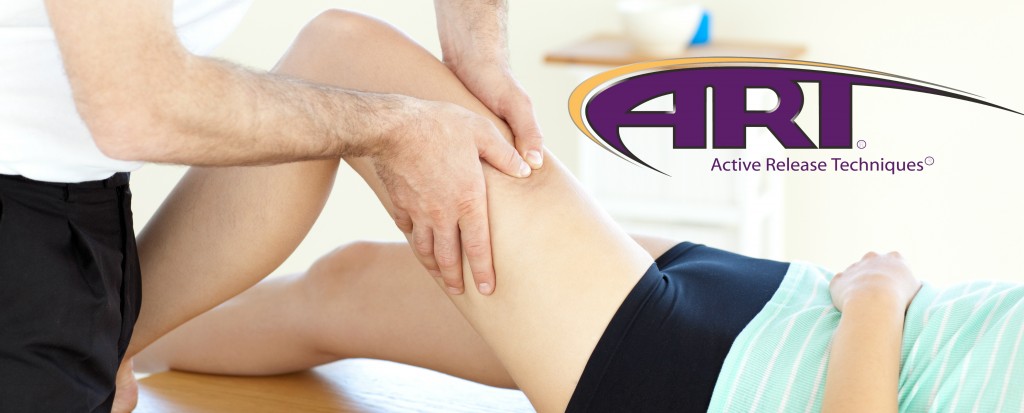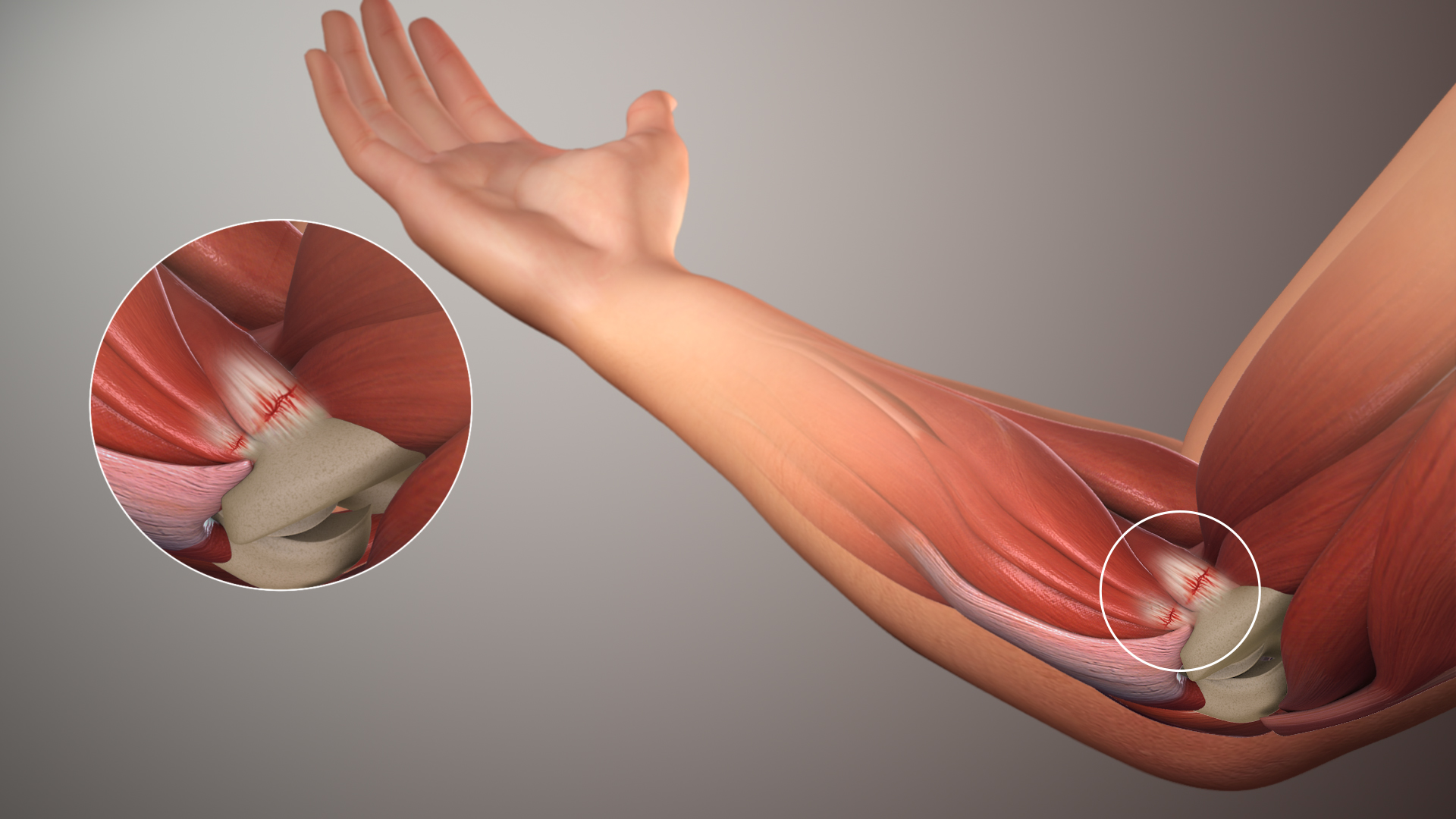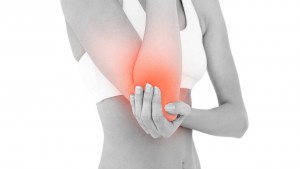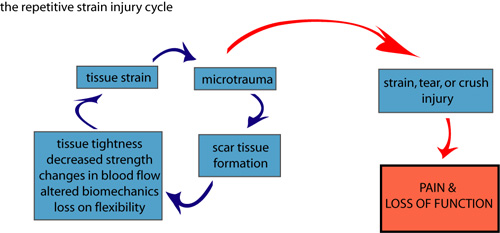Resolving Elbow Pain with Active Release Techniques (ART)
The presence of elbow pain can have a tremendous impact on our lives. When elbow pain develops it often results in the restricted use of our arm and hand both at work, and in our free time, affecting our enjoyment and quality of life. Seemingly simple activities such as lifting, grasping, and typing can seem like a monumental task and can greatly aggravate the condition. Those who have been unfortunate enough to suffer these types of symptoms have often been subjected to wearing an elbow brace and changing their daily routines in an attempt to take the strain off the painful elbow with the hope of healing the condition. Others have sought various forms of treatment ranging from medication, ultrasound, electrical stimulation, stretches, and exercises, only to be continually frustrated and disappointed at their continued pain and limited use of their arm.
Fortunately, a new treatment technique known as Active Release Techniques® (ART®) is proving to be a very effective method to combat elbow problems and help get elbow pain sufferers back to their normal daily activities. But before we talk about how ART® works so effectively we first need to understand how the elbow becomes injured in the first place.
Why Does the Elbow Become Injured?
To fully understand how elbow pain develops we need to first understand how the muscles of the elbow are associated with the hand. This is important because the large majority of elbow problems are associated with strain occurring at the wrist and hand, not just the elbow itself.
The hand is a very complicated area and as such there are a very large number of muscles that are associated with the hand and wrist. The majority of these muscles, especially the stronger muscles, actually run all the way from the hand, up the forearm and attach at the elbow. You can easily test this yourself by squeezing your forearm and firmly opening and closing your hand. You will feel the muscles in the forearm contract and relax as you open and close the hand. It is important to realize that even though it is a small area, there are many different muscles that attach at the elbow and travel down to the hand. These muscles are arranged in layers, and each muscle within each layer has a different job, or function. For example some of the muscles in the most superficial layer, that is the layer right under the skin, travel down and attach to the wrist. When they contract they act to flex and extend the wrist. Some of the muscles in the middle and deeper
layers attach all the way into the fingers and when they contract they move the fingers, such as when making a fist or picking up objects. These deeper muscles that move the fingers have many separate tendons that go to each individual finger. This makes it possible to move one finger by itself, and enables us to carry out tasks requiring fine motor skills such ay typing, buttoning a shirt, or playing the guitar.
As was previously mentioned, all of these muscles attach up at the elbow. If you were to stand with the arm straight at your side and the palm facing forward, you will be able to feel a bony prominence at the elbow on the side closest to the body. This is called the medial epicondyle. The muscles on the front of the forearm are collectively called the flexor muscles. Although there are many different muscles and many different layers of muscles, the vast majority of these muscles attach to this medial epicondyle through what is known as the common flexor tendon. There is a similar situation on the back of the forearm as well. The muscles on the back of the arm are know as the extensor muscles. The various extensor muscles attach to the lateral epicondlye, which is the body prominence on the outside of the elbow opposite the medial epicondyle.
How Does Pain and Injury Occur?
Within our daily routines we use our hands a great deal. As a result there is a tremendous amount of strain placed on the muscles of the hand and wrist – and remember, these muscles attach at the elbow. Every time you pick up an object, swing a golf club, or carry a bag of groceries the muscles of the hand and wrist must be active. Even an activity such as typing puts a tremendous amount of strain through low level repetitive contraction on these flexor and extensor muscle groups, and also at the elbow by way of the common flexor and extensor tendons.
In addition to high levels of muscle activity that is inherent in normal daily activities, many factors also place additional strain and work load on these muscles. For example, repetitive use with certain sports or occupations, joint tightness at the wrist, elbow, or shoulder, muscle imbalances, or previous injuries that may not have been fully treated or rehabilitated can further strain the muscles of the elbow.
Over time this stain can develop into what is know as micro-trauma. Simply stated, microtrauma is very small scale muscle damage that occurs in the muscles and ligaments in response to small levels of strain. Initially this micro-trauma is not painful, but may be perceived as a mild ache or tightness in the muscles, or at the medial or lateral epicondyles. Although it is only small, this damage still needs to be repaired. The body responds to micro-trauma by laying down small amounts of scar tissue to repair the injured tissue.
Unfortunately over time this scar tissue will build-up and accumulate into what we call adhesions. As these adhesions form they start to affect the normal health and function of the muscles. In fact, they will often lead to pain, tightness, lack of flexibility, muscle weakness, compromised muscle endurances, restricted joint motion and altered biomechanics, and diminished blood flow.
As the muscles of the forearm become strained they also become very tight, and the common tendon with which the muscles attach at the elbow begins to pull away from its attachment site. This leads to pain and irritation at the area of the epicondyle. These are how common elbow conditions such as medial epicondylitis, and lateral epicondylitis – more commonly known as golfer’s elbow and tennis elbow – develop.
In addition to causing tightness, these adhesions are also very “sticky”, and affect the ability of the muscles to stretch, contract, and slide over one another. Recall that there are several layers of muscles in the forearm, and that each of these muscles has different functions, and therefore contract at different times. For this process to occur correctly the muscles need to be able to glide freely on one another. As adhesions develop they will cause the individual muscles and various layers to stick on each other and prevent this normal tissue gliding. When the muscles lose the ability to slide contraction of one muscle will cause a pull and tension on all of the muscles even when the muscle is not being used. This in turn will cause further strain to the region, and more strain on the muscles as well as the epicondyle.
Another common development is that the accumulation of scar tissue adhesions can affect the nerves in the region of the elbow and forearm. This occurs because between the layers of muscles there are nerves that run all the way from the neck, down the arm, past the elbow and forearm, and into the hand. Just as the muscles need to be able to slide on each other, the nerves also need to be able to glide freely between the layers of muscles. In many cases the accumulation of scar tissue can cause the nerves to become “stuck” to the surrounding muscles. Instead of the nerve easily gliding between the muscles it becomes stretched and irritated and can lead to other types of elbow and lower arm pain. When the nerves becomes entrapped, in addition to pain, other symptoms such as numbness, tingling, and weakness are often present. This is what commonly happens in elbow conditions such as Ulnar Nerve Syndrome, Interosseous Nerve Syndrome, or Radial Nerve Syndrome.
How Can These Elbow Injuries Be Fixed?
The Traditional Approach…
In an attempt to relieve elbow pain, a variety of treatment methods are used, either on their own, or in combination with other methods. Some of the more common approaches include anti-inflammatory medications, rest, ice, elbow splints or braces, ultrasound (US), muscle stimulation (E-Stim), stretching, and exercise. Unfortunately most of these traditional techniques generally require a long period of time before they provide any significant relief, and in many cases provide only temporary relief from symptoms instead of fixing the underlying cause of the problem.
The main reason that these approaches are often ineffective is that they fail to address the underlying scar tissue adhesions that develop within the muscles and surrounding soft tissues. It is these adhesions that are binding the tissues together, restricting the normal sliding of the tissues, and potentially entrapping the surrounding nerves in the elbow and forearm.
Passive approaches such as medications, rest, ice, and steroid injections all focus on symptomatic relief and do nothing to address the muscle restrictions and dysfunction. More active approaches such as stretching and exercises are often needed for full rehabilitation of the condition and to restore full strength and function of the muscles, however, they themselves do not treat the underlying adhesions. In fact, without first addressing the scar tissue adhesions, stretches and exercises are often less effective and much slower to produce relief or recovery from the elbow condition.
Active Release Techniques® Our Approach: ART® – A Better Solution
ART stands for Active Release Technique. It is a new and highly successful hands-on treatment method to address problems in the soft tissues of the body, including the muscles, ligaments, fascia, and nerves. ART treatment is highly successful in dealing with injuries because it is specifically designed to locate and treat scar tissue adhesions that accumulate in the muscles and surrounding soft tissues. By locating and treating the soft-tissue adhesions with ART, it allows the practitioner to, 1) break-up restrictive adhesions, 2) reinstate normal tissue flexibility and movement, and 3) more completely restore flexibility, balance, and stability to the injured area and to the entire kinetic chain.
You can think of an ART treatment as a type of active massage. The practitioner will first shorten the muscle, tendon, or ligament, and then apply a very specific pressure with their hands as you actively stretch and lengthen the tissues. As the tissue lengthens the practitioner is able to assess the texture and tension of the muscle to determine if the tissue is healthy or contains scar tissue that needs further treatment. When scar tissue adhesions are felt the amount and direction of tension can be modified to treat the problematic area. In this sense, each treatment is also an assessment of the health of the area as we are able to feel specifically where the problem is occurring.
An additional benefit of ART is it allows us to further assess and correct problems not only at the site of pain itself, but also in other areas of the kinetic chain, which are associated with movement compensations and are often contributing factors to the problem. This ensures that all the soft tissues that have become dysfunctional and are contributing to the specific injury are addressed, even if they have not yet all developed pain. One of the best things about ART is how fast it can get results. In our experience, the majority of injuries respond very well to ART treatment, especially when combined with the appropriate home stretching and strengthening exercises. Although each case is unique and there are several factors that will determine the length of time required to fully resolve each condition, we usually find a significant improvement can be gained in just 4 – 6 treatments. These results are the main reason that many elite athletes and professional sports teams have ART practitioners on staff, and why ART is an integral part of the Iron man triathlon series. To book an appointment to see if ART will be able to help with your related injury, simply call our office at 613.237.3306 or fax 613.237.3100




